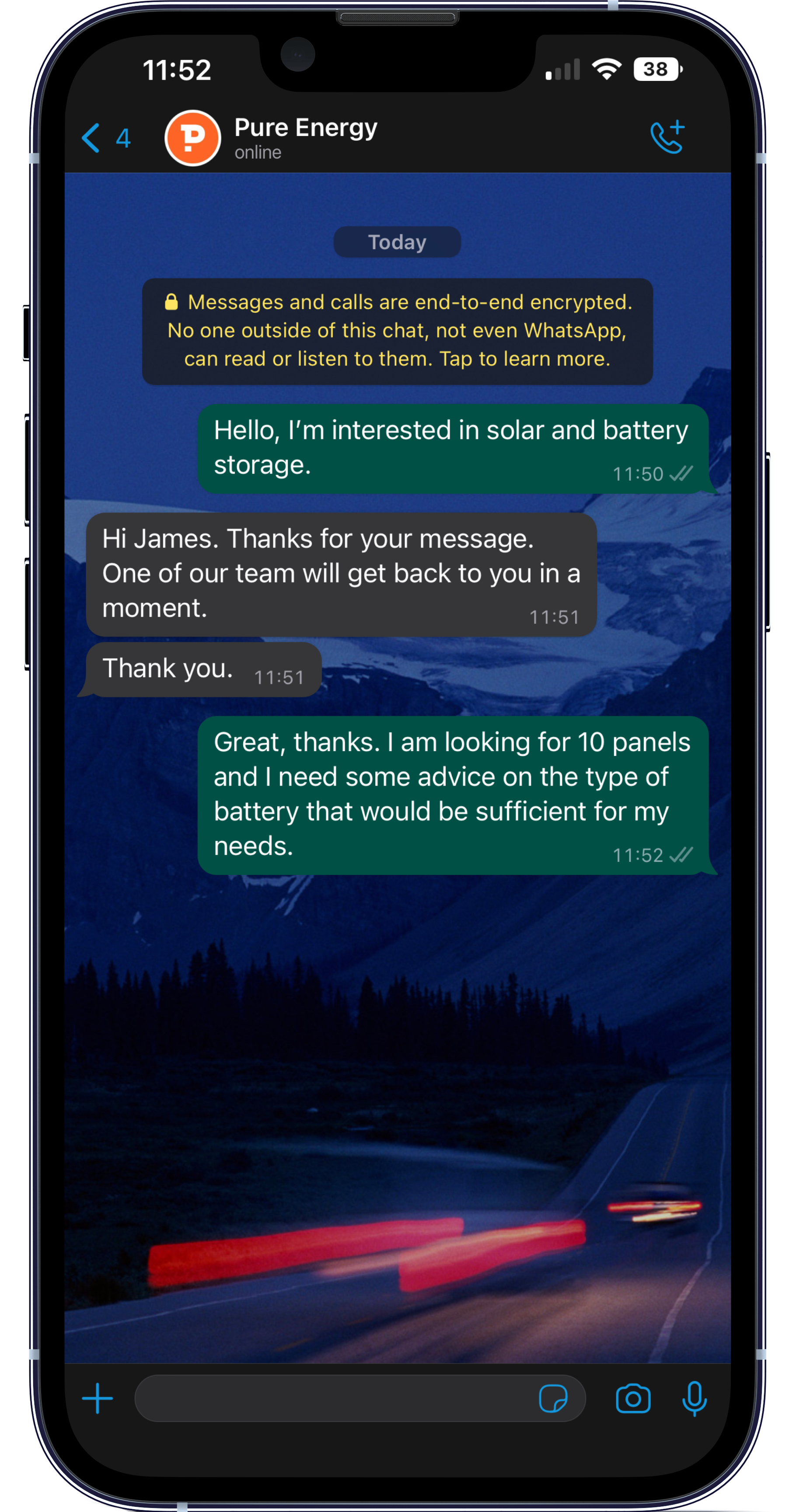What is Battery Storage?
A battery system enables you to store excess energy from your Solar PV system and use later on within the property. Batteries can charge from surplus solar power or from the grid. Advanced software installed within these systems use algorithms to work in conjunction with renewable energy production methods such as solar power to store surplus energy or release it to the grid.
Batteries come in all shapes and sizes and the rate at which these systems can take in and release energy is determined by the systems controller. The most common charge/discharge rate for battery systems is 3kW.
Lithium-ion batteries, which can be found in mobile phones and electric vehicles, are the most common battery types within the renewable sector.
Depending on the type of system you have installed, if you already have solar power at your property and you’re adding batteries on retrospectively, a separate battery controller will be installed to manage the storage solution and dictate when to consume surplus power or distribute it back to the grid.
Lithium-ion batteries
Software driven
Warranty protected
User controlled settings
Types of Battery Installations
There are several factors that determine the type of installation you may have when adding battery storage to your property. During the initial wave of solar installations in the UK in 2010, the government introduced the Feed-in Tariff (FIT) scheme. This scheme was designed by the government to promote the uptake of renewable and low-carbon electricity generation.
The FIT scheme does not stop you from adding battery storage to an existing installation. However, to ensure your feed-in tariff rates are not hindered, a separate inverter is installed to control the battery system.
If you already have Solar PV installed at your property, the first question is; do you receive the feed-in tariff payments? If you had the PV installed between April 2010 and April 2019, you most likely registered to the FIT scheme. If so, a separate battery inverter would be installed at your property to control the new smart technology batteries.
If you have Solar PV at the property, but it was installed post April 2019, there are more options when adding storage to your system. The existing Solar PV inverter could be replaced with a hybrid inverter. A hybrid inverter is one unit that controls both the solar and battery at once.
But why replace my existing inverter with a hybrid? The potential that you was miss-sold when the original system was installed is greater than you’d expect. You may have a system with a peak output of 5kWh, but only have a 3kWh inverter. The remaining 2kWh of potential generation would be lost and your system could be running at a lower efficiency than it is capable of. Furthermore, space may be limited at your property. Two inverters taking up more space than one.
Don’t have Solar PV? Now is a great time to invest and save money on your bills. Installing a battery at the same time as photovoltaic panels means you’re eligible to 0% VAT on your order, due to a current government incentive.
Solar Panels produce the energy to power your home. During times of peak production, surplus energy will be generated. You can store this surplus energy in a battery and discharge from the system when your home needs it the most.
Nearly all electricity providers now offer an economy 7 style tariff where energy is available at reduced rates during nighttime periods. With the smart controls on a battery system, you can program your system to draw energy from the grid to charge your battery system during these lower rate times, hence covering your usage from stored energy the next day.
Reduce your bills by up to 80%.
Request a quote in 60 seconds. Generate clean, green energy.

